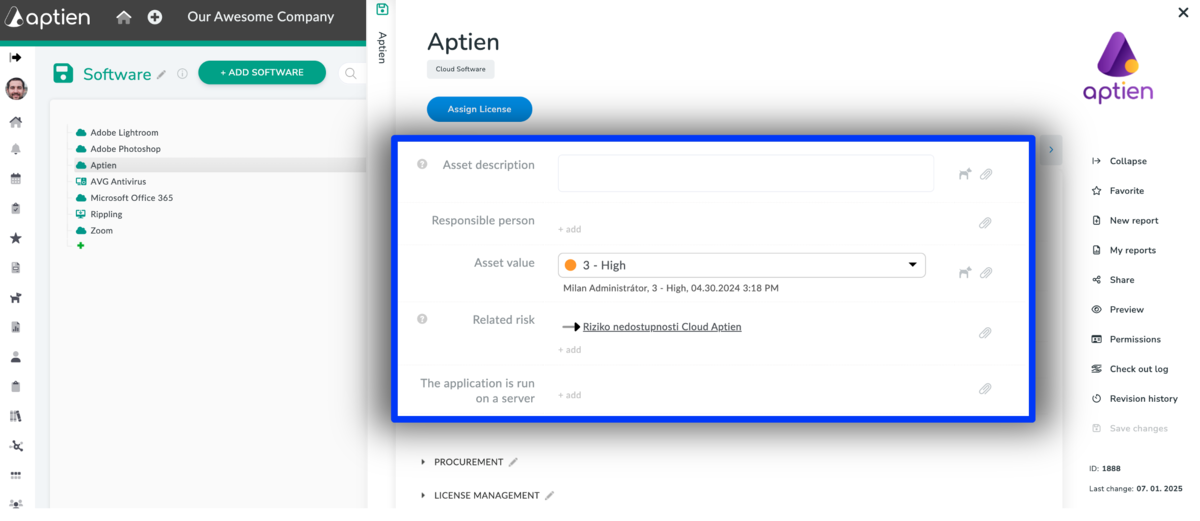This article is for IT, cybersecurity managers, information security managers or risk managers.
Software assets include all the software programs and services a small or medium-sized business uses to operate daily. This includes software applications and cloud-based services (SaaS - Software as a Service) that the business depends on. They are considered assets because they add value, either by saving money or helping run everyday tasks. Some software assets are critical for the company’s main operations.
What Are Most Common Software Assets
- Enterprise Resource Planning (ERP) systems: All-in-one platforms like SAP or Oracle ERP that help manage important business functions.
- Human Resource Management Systems (HRMS)
- Payroll software
- Project and workforce management tools
- Accounting and financial software
- Customer Relationship Management (CRM) systems: Programs like Salesforce or HubSpot that help track customer interactions and sales.
- Email servers
- Operating Systems: Software that runs your computers, such as Windows, macOS, or Linux.
- Database Management Systems: Tools like Oracle, MySQL, or Microsoft SQL Server used to store and organize business data.
- Cloud document storage services
- Security software: Programs like antivirus (e.g., Norton, McAfee) and firewalls that protect your computer systems.
How to Keep Track of Software Assets
As an IT or security manager, it’s important to keep a clear record of your company’s software and related connections. Follow these simple steps to stay organized:
- Open your "Software Assets" tracker or inventory tool.
- Enter Software Details: Add key information for each software, app, or cloud service you use.
- Add Extra Info: Include details like version numbers, license types, and how often the software is used.
- Manage Risks: If you’re doing this for risk management, use your risk assessment process to identify and address potential issues.
